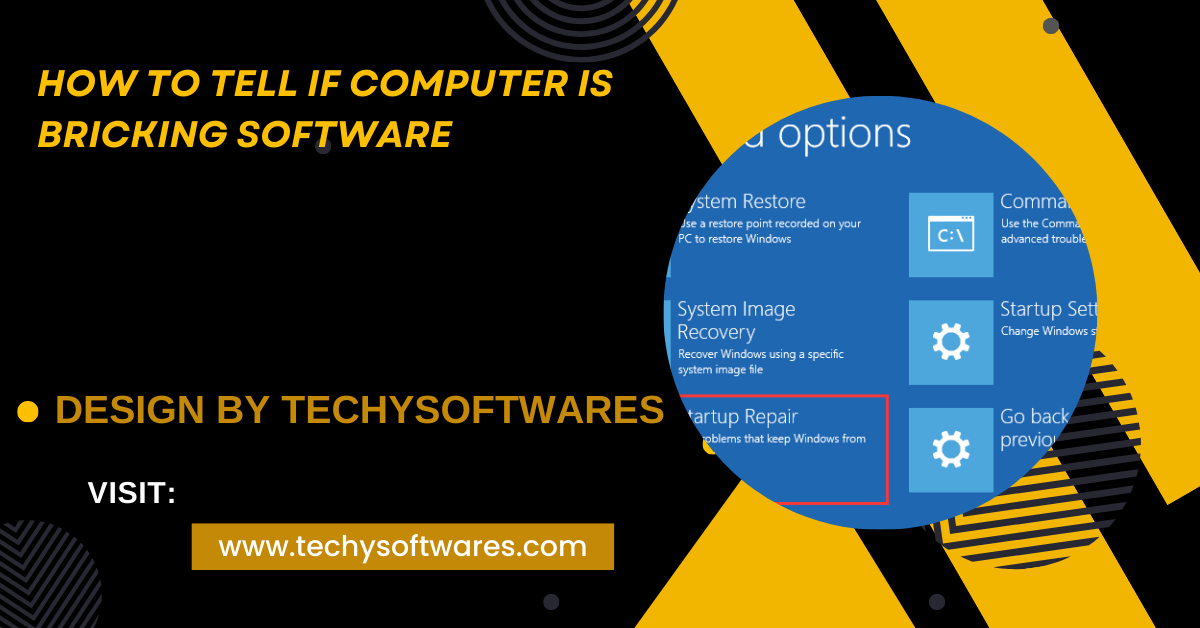Signs Your Computer Is Software Bricking

In the world of technology, the term "bricking" often evokes a sense of dread among users and professionals alike. It refers to a critical state where a device, in this case, a computer, becomes rendered useless, akin to a brick. This phenomenon can occur due to various reasons, ranging from software glitches to user errors. Recognizing the signs of software bricking early on is crucial, as it can help prevent data loss and costly repairs. This article aims to provide an in-depth analysis of the indicators that your computer might be heading towards a software bricking scenario, offering valuable insights to help users take preventive measures.
Understanding Software Bricking

Software bricking is a severe condition where a computer’s operating system or critical software components become irreparably damaged, rendering the device inoperable. This state is often the result of an unsuccessful software update, an incompatible software installation, or even a malicious attack. Unlike hardware bricking, which involves physical damage to the device, software bricking can sometimes be rectified, but it often requires advanced technical knowledge and, in some cases, data recovery experts.
The implications of software bricking can be far-reaching. Users may experience complete system freezes, frequent crashes, or an inability to boot the system. In addition, data stored on the affected computer might become inaccessible, leading to potential data loss. Therefore, recognizing the early signs of software bricking is essential for prompt action and potential recovery.
Signs Your Computer is at Risk

Identifying software bricking in its early stages can be challenging, as the symptoms can often mimic those of less severe issues. However, there are several key indicators that can help users recognize the potential for software bricking.
Frequent Crashes and Freezes
One of the most apparent signs of impending software bricking is an increase in the frequency of system crashes and freezes. If your computer suddenly starts freezing during basic tasks or crashes without warning, it could be a sign that the operating system or key software components are unstable. These crashes might occur during specific tasks, such as opening large files or running certain applications, indicating that the issue is software-related.
For instance, let's consider a scenario where a user frequently uses video editing software. If the computer starts crashing every time a large video file is opened or edited, it might be a sign that the software is incompatible with the system or that there's a critical bug in the software. Such frequent crashes can lead to software bricking if left unaddressed.
Unusual Boot Behavior
Problems during the boot process can also indicate potential software bricking. If your computer takes an unusually long time to boot up or fails to boot properly, it could be a sign of underlying software issues. For example, the system might get stuck on the BIOS screen, fail to load the operating system, or display error messages during the boot process.
In some cases, the computer might enter a continuous reboot loop, where it repeatedly tries to boot but fails, eventually leading to a bricked state. This could be due to a corrupt boot sector, damaged system files, or an incompatible boot loader.
Inaccessible Data and Files
Another critical sign of software bricking is the inability to access data and files stored on the computer. If you find that certain files or folders are suddenly inaccessible, it could be due to corruption in the file system or damage to the operating system. This might manifest as error messages when trying to open files, an inability to locate specific files, or even the disappearance of entire folders.
For example, imagine a scenario where a user's document folder, containing years' worth of important work, suddenly becomes inaccessible. This could be a result of a damaged file system, rendering the data unreadable and potentially leading to software bricking if the issue is not addressed promptly.
System Instability and Performance Issues
General system instability and performance degradation can also hint at potential software bricking. If your computer starts running significantly slower than usual, takes an unusually long time to respond to commands, or experiences frequent lags, it could be a sign that the software is not functioning optimally.
In addition, if certain applications or features start behaving erratically, such as opening in an incorrect resolution or not responding to user inputs, it might indicate that the software environment has become unstable. Such instability can gradually lead to software bricking if the underlying issues are not resolved.
Software Compatibility Issues
Installing incompatible software can also lead to software bricking. If you’ve recently installed new software or updated an existing one, and your computer starts exhibiting strange behavior, it might be a sign of incompatibility. This could range from minor glitches to complete system instability.
For instance, if a newly installed software conflicts with the operating system or other crucial software components, it could lead to critical errors and potentially brick the computer. Users should always exercise caution when installing new software and ensure compatibility with their system specifications.
Error Messages and Blue Screens
Frequent error messages and blue screens (or “Blue Screen of Death” in Windows systems) are clear indicators of potential software issues. These errors often occur when critical system components fail, leading to a system crash. If you start seeing an increase in error messages or blue screens, it could be a sign that your computer is at risk of software bricking.
Error messages can range from simple warnings to critical errors, and they often provide valuable insights into the underlying issue. Blue screens, in particular, indicate a severe system error and often require advanced troubleshooting to resolve.
Prevention and Next Steps
Preventing software bricking is often about being proactive and taking necessary precautions. Here are some tips to help you minimize the risk:
- Regularly update your operating system and software to ensure you have the latest security patches and bug fixes.
- Backup your important data frequently to an external hard drive or cloud storage to ensure data safety.
- Exercise caution when installing new software, especially from unverified sources. Always research the software and ensure it is compatible with your system.
- Use reliable antivirus software to protect your computer from malware and viruses, which can sometimes lead to software instability.
- Seek professional help if you encounter complex issues. IT experts can often resolve software problems before they escalate into bricking.
If you suspect your computer is at risk of software bricking or is already in a critical state, it's essential to act quickly. Here are some steps you can take:
- Disconnect from the internet to prevent further data loss or external attacks.
- Try booting into safe mode to diagnose and potentially resolve the issue. Safe mode loads only the essential system components, which can help identify the problem.
- Use system restore points to revert your computer to a previous, stable state. This can be an effective way to undo recent changes that might have caused the issue.
- Consider using specialized software to repair your operating system or recover lost data. However, always ensure you're using reputable tools to avoid further damage.
- If all else fails, consult a professional data recovery service. They can often recover data from bricked computers and help diagnose and repair the underlying issue.
Conclusion
Software bricking is a serious issue that can render your computer unusable and lead to significant data loss. By recognizing the signs early on and taking appropriate preventive measures, you can mitigate the risk and potentially save your device and data. Remember, a proactive approach to computer maintenance and a healthy dose of caution when installing new software can go a long way in preventing software bricking.
What is the first step to take if I suspect my computer is bricking?
+If you suspect your computer is bricking, the first step is to disconnect from the internet to prevent further data loss or external attacks. Then, try booting into safe mode to diagnose the issue and potentially resolve it.
Can software bricking be reversed, and how?
+Yes, software bricking can sometimes be reversed. You can try using system restore points to revert your computer to a previous, stable state. Additionally, specialized software can help repair your operating system. If all else fails, professional data recovery services can often recover data and repair the computer.
What are some common causes of software bricking?
+Common causes of software bricking include unsuccessful software updates, incompatible software installations, malware attacks, and system file corruption. It’s important to exercise caution when installing new software and to keep your operating system and antivirus software up to date.


